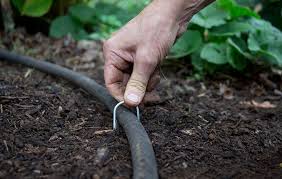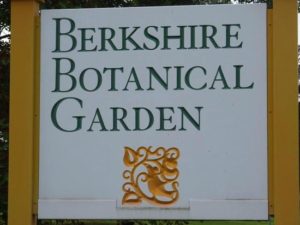Be-A-Better-Gardener – Irrigation
 A drip irrigation system or soaker hose will water deeply and minimize water waste.
A drip irrigation system or soaker hose will water deeply and minimize water waste.
By Thomas Christopher
July is typically the hottest month of the year in the Northeast. That means it’s the time when plants have the greatest thirst; they evaporate water off the surface of their leaves to cool themselves. But July is also a relatively dry month in our region, which means that moisture is in shorter supply just when it is needed most. And this deficit has been exacerbated by climatic changes in recent years – summer rainfall has not, on average, diminished, but it comes in fewer, more intense storms, meaning that more water is lost as surface runoff and the periods of drought between storms have become longer.
This makes irrigation especially important in the summertime. In fact, as I was told when I was a horticultural student, your hose or watering can is your most potent tool for managing your plants, for water is, except for sunlight, the one resource plants cannot do without. Give a plant too much or too little water and you will kill it, and even within the acceptable range, you can, by modulating the amount of water that you give a plant, encourage lusher or more compact growth.
This is why you need to water intelligently, and not just turn on the hose for a soak. Another factor, of course, is minimizing waste: whether you draw from a well or a municipal water system, water is a finite resource and you should take only as much as you need. Besides, you’ll find that your plants respond better to precise irrigation.
That’s why you should only water at need; let the plants tell you when to irrigate. Leaves of perennials and annuals will start to droop, or “flag,” when the plants are short of water. Flagging at midday during hot sunny weather may be just a sign that the roots can’t absorb water fast enough to satisfy the needs of the plant – there may be adequate moisture in the soil. If the plant doesn’t perk up in late afternoon as the day cools and the sunshine dims, however, that’s a sign that watering is definitely needed.
When you do water, do so in the early morning. This will minimize the amount of water lost to evaporation off the surface of the soil. Watering in the morning is also good because wetted foliage will dry quickly. Evening watering leaves foliage wet overnight, which encourages fungal diseases. And try to apply the water directly to the surface of the soil with a drip irrigation system or soaker hoses to minimize waste; in hot, dry weather, as much as 50 percent of the water distributed by old fashioned sprinklers evaporates before it hits the ground.
Apply the water slowly but deeply, moistening the soil to a depth of 6-8 inches. You can tell how deep the water has penetrated by pushing a dowel or piece of steel rod into the ground – it will slip easily through the moistened soil and stop when it reaches the un-moistened soil below. Watering deeply in this fashion encourages plants to send their roots deeper into the soil, which makes them better able to tap whatever water is in the soil, whether from irrigation or natural rainfall. Novice gardeners have a tendency to water often and shallowly, which encourages growth of shallow root systems that cannot cope well with drought.
Finally, you should prepare for the dry season by digging in lots of compost when you work the soil. Compost acts as a sponge, absorbing and holding as much as nine times its own weight in water, greatly increasing the moisture retention of your soil. In established perennial or shrubbery beds whose soil you don’t want to disturb, you should apply an inch of compost as a mulch in the spring, and let the worms do the work of carrying the organic matter down to the area of the plant roots. Such a dose of compost also has the advantage of supplying many essential plant nutrients as well.
Thomas Christopher is the co-author of “Garden Revolution” (Timber Press, 2016) and is a volunteer at Berkshire Botanical Garden. berkshirebotanical.org
Be-a-Better-Gardener is a community service of Berkshire Botanical Garden, one of the nation’s oldest botanical gardens in Stockbridge, MA. Its mission to provide knowledge of gardening and the environment through 25 display gardens and a diverse range of classes informs and inspires thousands of students and visitors on horticultural topics every year. Thomas Christopher is the co-author of Garden Revolution (Timber press, 2016) and is a volunteer at Berkshire Botanical Garden. berkshirebotanical.org.


